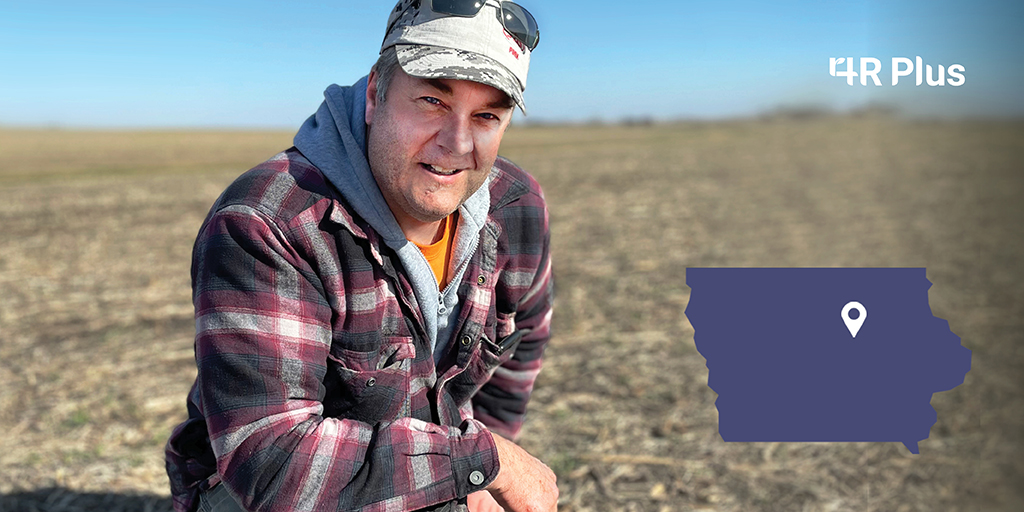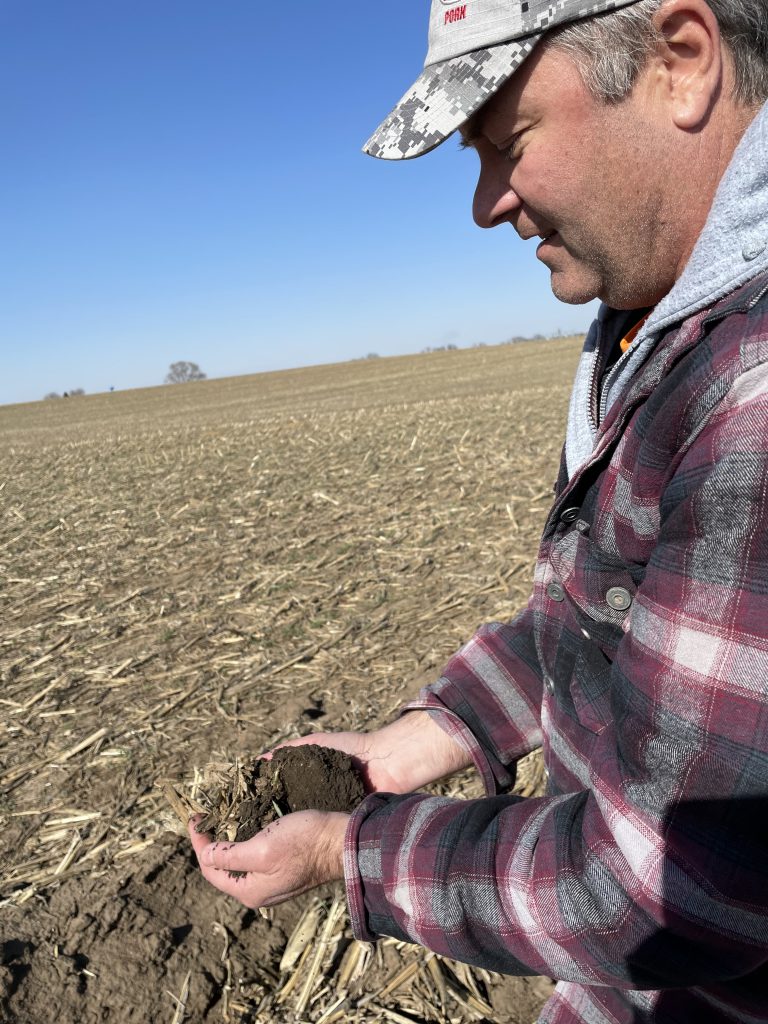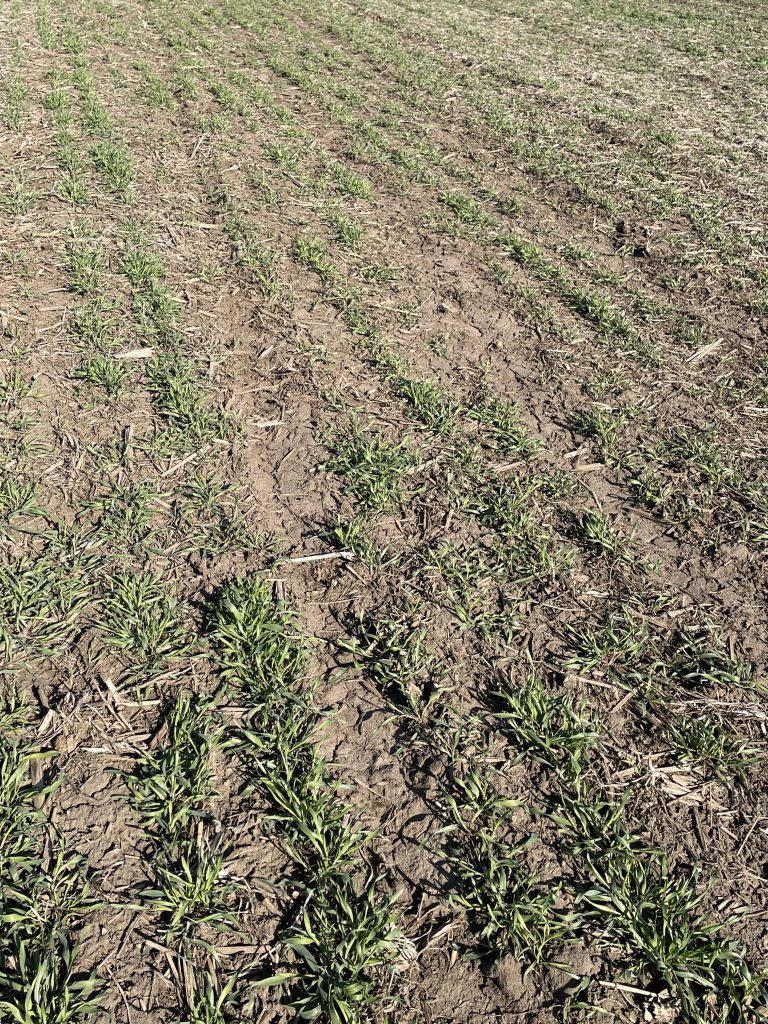
Dale Launstein of Grundy County is willing to go to great lengths protecting the productive soil he raises corn and soybeans on. About 25% of the ground is highly erodible, but the rest is mostly flat.
“I personally have trouble watching a farm get mistreated through tillage and watching the soil wash away with a heavy rain,” he said. He and his brother, John, have been experimenting with conservation tillage for 25 years. They settled on no-till for soybean ground and strip-till for corn.
They switched to strip-till after a wet fall. “Rather than go out and do bad fall tillage for corn-on-corn, I walked away. We went the cover crop route with strip-tilling in the spring with help from cost-share to aid in the transition,” Launstein explained.
They use an air seeder and have a goal of planting the cover crop no more than three days after harvest. “If the field is dry, we’ll seed it. We’ve learned that with a wetter fall, it’s not worth it to wait for the soil to dry out,” he said.
Learning lessons from no-tilling beans and terminating rye

To control white mold, they run about 85% corn-on-corn and 15% beans. They’ve been no-tilling soybeans into cornstalks and rye, then terminating the rye. “We’ve learned a lot from early mistakes,” he said. “Before we had the air seeder, we planted beans with a 24-row planter and planted 30-inch rows.
“When the beans started coming up, the rye was about mid-thigh. And we didn’t want to accidentally drive on the beans and snap them off, so we just let the beans get bigger and then sprayed off the rye when it was waist high,” he explained. “We killed the rye, but it didn’t all fall down and we were wondering what the beans were going to yield on that field. But it yielded right with everything else. We learned that in a wet year, don’t worry about the moisture loss from rye. And in a drier year, you’ll be able to quickly terminate your cover crop.”
On the bean acres, the Launsteins average 75 bushels to 80 bushels per acre. Cover crops, which help with weed control on corn acres as well, have improved yield consistency.
Learning to love cover crops

Launstein said he’s learning to love cover crops because they mellow the soil. “This will be year No. 3 where we’re committed to cover crops on all acres,” he said. “They’re definitely pulling nutrients back up to the top where we can start over with it on the next crop.”
They also experimented with tillage radishes as a cover crop in a prevent plant field in 2019. “We did a lot of drain tile work, then planted radishes, and then did more tile connections the next spring behind those radishes,” Launstein continued. “Every time I dug a connection on my field, those radishes had loosened the soil down about 2 feet in the ground.”
During the spring of 2020, farmer friends from eastern Iowa visited Grundy County multiple times to investigate his strip-till and cover crop methods. “We went digging through the different fields, and they were completely amazed at how much the soil structure changed from the cover crop – even if it’s only 6 inches tall in the spring – and how much it cuts down on your side wall compaction,” he said.
Improving mistreated farmland
Launstein rents about 75% of the land he farms and has a system to turn mistreated land around. “Pig manure and a cover crop combination seem to be a fast way to recover mistreated land,” he said. Fortunately, he has access to as much manure as needed; the Launsteins operate two hog finishing operations.
Manure is tested yearly to see what they can apply based on Iowa State University soil fertility recommendations. “What I’d really like to do is break down the nitrogen into smaller amounts and spoon-feed it more to the corn,” he said. “I’d like to put out some manure later on a standing crop at the base of the corn plant, to slowly blend the percentage of manure in and bring nitrogen out later in the growing season so it’s not loaded up so early.”
Click here to ask Dale Launstein a question about the farming operation.
